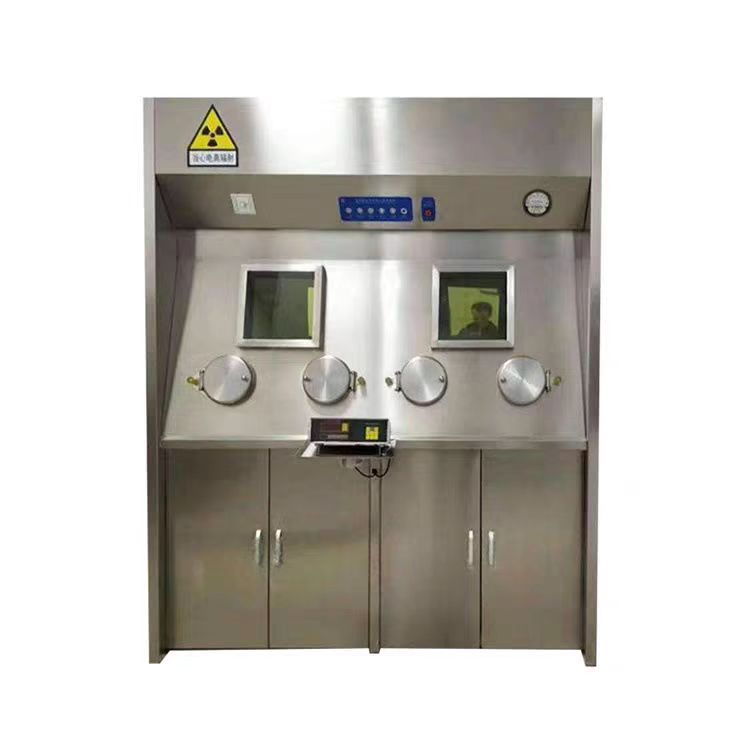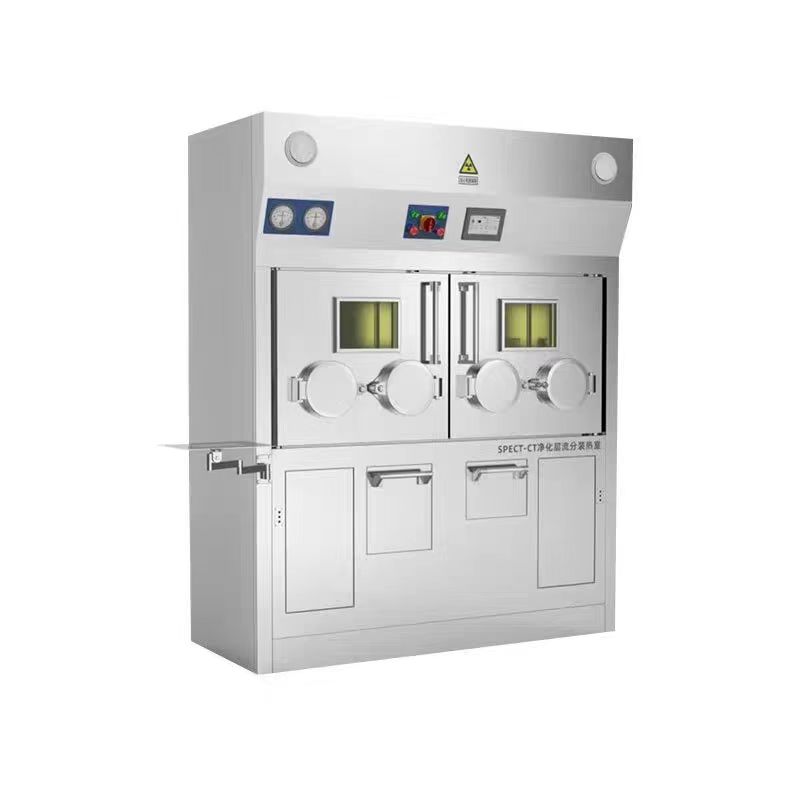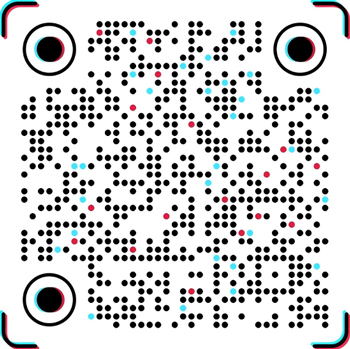Nuclear Medicine Fume Hood
Efficient ventilation and purification: built-in powerful exhaust system and HEPA/activated carbon filter, quickly extract radioactive aerosols, chemical vapors or dust, keep the operating environment clean, and reduce the risk of inhalation.
Multiple safety protection: transparent radiation shielding windows (such as leaded glass) combined with negative pressure design to prevent the leakage of radioactive materials, taking into account both radiation protection and chemical contamination control.
Flexible applicability: suitable for packaging of low- and medium-activity radioactive drugs, chemical synthesis or reagent preparation (such as labeled antibodies), compatible with conventional experimental instruments (such as centrifuges, pipettes).
Easy to operate: open or semi-enclosed structure allows experimenters to operate directly manually, improve experimental efficiency, especially suitable for rapid processing of short half-life isotopes (such as fluorine-18).
Low economic and maintenance costs: compared with hot rooms, fume hoods have lower construction and operation costs, and simple cleaning and maintenance processes, suitable for small and medium-sized hospitals or laboratories.
Nuclear Medicine Fume Hood Detailed Explanation
Nuclear medicine fume hoods are protective equipment designed for the operation of medium and low activity radioactive materials and hazardous chemicals. They are widely used in nuclear medicine departments of hospitals, scientific research laboratories and pharmaceutical institutions to ensure the safety of operators and control environmental pollution.
1. Structure and protection design
Shielding material: The main body is made of stainless steel or corrosion-resistant material, and the front window is usually lead glass (thickness 5-10 mm) or leaded organic glass, which can block beta rays and some low-energy gamma rays.
Ventilation system: Built-in powerful exhaust fan (wind speed ≥ 0.5 m/s), with negative pressure design, to ensure that the airflow flows from outside to inside in one direction, to prevent the overflow of radioactive aerosols or harmful gases.
Filter device: Multi-layer HEPA filter (filtration efficiency ≥ 99.97%) and activated carbon adsorption layer, effectively capture radioactive particles and volatile chemicals (such as acetonitrile, methanol).
2. Core functions and operating characteristics
Manual direct operation: The open or semi-enclosed structure allows the experimenter to operate through the glove port or directly reach out, which is suitable for short-time, high-flexibility experiments (such as fluorine-18 labeled drug packaging).
Multifunctional adaptation: Built-in power socket, gas interface and laboratory table, can place centrifuges, micropipettes and other equipment, support radioactive labeling, sample preparation and other processes.
Real-time monitoring: Equipped with radiation dose alarm, air flow sensor and temperature and humidity monitoring, automatic alarm and emergency exhaust start in case of abnormality.
3. Typical application scenarios
Radioactive drug preparation: Preparation of diagnostic imaging agents (such as technetium-99m labeled compounds) or therapeutic drugs (such as lutetium-177-DOTATATE), the activity is usually less than 1 Ci (37 GBq).
Sample processing and detection: Processing of radioactive labeled blood and tissue samples, or packaging of waste after cell culture experiments.
Chemical synthesis assistance: used for coupling reactions between radioisotopes and target molecules (such as antibodies and peptides) to avoid organic solvent volatilization contamination.
4. Safety regulations and standards
International standards: follow the IAEA "Guidelines for the Safe Handling of Radioactive Materials" and ISO 14644 clean room standards to ensure the cleanliness and radiation safety of the operating area.
Regional regulations: The US NRC requires annual inspections of fume hood shielding effectiveness and exhaust efficiency (such as ANSI/ASHRAE 110 tests), and the EU must comply with EN 14175 certification.
Daily maintenance: regularly replace filters, test sealing, and record radiation dose data to ensure long-term compliance.
5. Technology development trends
Intelligent integration: add Internet of Things (IoT) sensors to remotely monitor equipment status and automatically generate maintenance reports.
Energy-saving optimization: use variable frequency fans and intelligent airflow control systems to reduce energy consumption while maintaining stable negative pressure.
Modular expansion: support multi-unit splicing or functional module (such as built-in refrigeration area) customization to meet diverse experimental needs.
Nuclear medicine fume hoods, with their balanced safety, flexibility and economy, have become the core protective facilities for medium and low-risk radioactive operations, promoting the precise development of nuclear medicine diagnosis, treatment and research.












